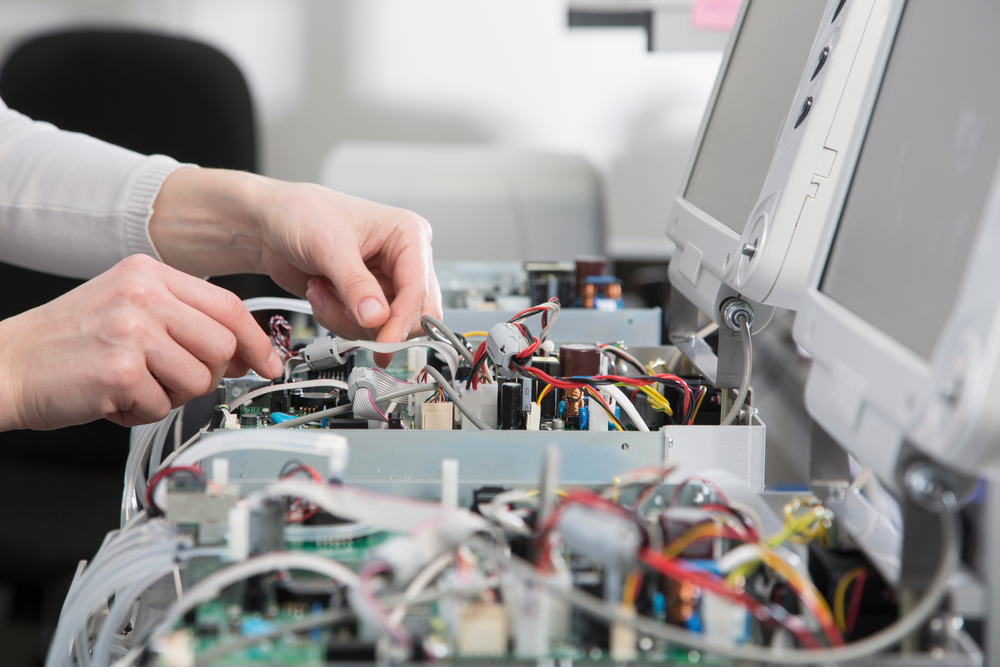The Current State of Wearables in the Medical Industry
Rebecca Benison March 4, 2016
You’d be hard pressed to find someone today who isn’t wearing some form of technology. Think you’re bucking the trend? Go ahead and check the time – because even if you don’t have a smartphone in your hand, you probably have a watch on your wrist.
Sure, a traditional timepiece isn’t exactly high-tech, but it’s one example that shows how much wearable technology is already a part of everyday life.
As for more advanced technology, the market for wearables in healthcare is rapidly picking up the pace; and it’s not all about calorie counters and fitness trackers, either. Here are some of the top wearable technology advances we’re seeing in medicine.
Neuroimaging
When doctors want to record activity in the brain, they’ll typically use an electroencephalogram (EEG). The test is non-invasive, but messy. Technicians attach electrodes to the scalp using gel. And for extended monitoring, the patient’s head is covered in gel and electrodes before being wrapped tightly in gauze for days at a time (trust me on this one, not fun). But this all might change, soon enough.
Researchers have now developed a more user-friendly EEG option that can be worn like a helmet without the ick-factor of a head full of gel or unreliable results from loose connections. This is ideal for longer test periods, since patients can easily remove and replace the helmet as needed – meaning you won’t have to give up showering for the duration of the test. Yay!
Heart Monitoring
February is heart month, which is the perfect time to take control and make sure things are pumping efficiently and at the right pace. But most at-home heart monitoring systems are either unreliable, or somewhat obtrusive with electrodes attached to your chest that are hooked up to a fanny-pack worn around the waist. Neither is a terrible option, but fortunately, better devices are hitting the market that are both easy to wear, and effective.
QardioCore is a wireless electrocardiogram (ECG/EKG) that wraps around the chest with no need for wires or fanny packs. This makes it easy to monitor your heart over an extended period as the device checks your heart rate, breathing, activity, and more for a full picture of your cardiac function. It also connects wirelessly with iOS devices, which is something that traditional EKG’s can’t do.
Back Support
Whether you’re sitting at a desk all day or on the frontlines of the shop floor, chances are you’re experiencing some back pain by the time you go home. To combat the problem, you might invest in some support pillows for your chair or a heating pad to loosen your muscles. While these products might provide short-term comfort, they’re not doing much to address the underlying problems causing your back pain.
Valedo uses sensors to track your posture while a complementary app teaches you exercises that can strengthen your back muscles and relive pain. The system uses interactive games to train and engage users, while the sensors measure your performance and accuracy.
Diabetes Management
Diabetes continues to be a pressing issue throughout the U.S. For many diabetics, managing the disease means regularly checking blood glucose levels via finger pricks. While these blood tests are extremely accurate and can be life-saving, they are also painful and can be difficult to do on-the-go. With this in mind, Google sought to create a better solution, and may have actually solved two problems with one product.
Smart contact lenses, developed in partnership with Novartis, can correct vision while also monitoring glucose levels in patients’ tears. The information is then sent to users’ smartphones for review. Considering how many people need glasses or contact lenses anyway, combining the smart-sensing technology in this way is an ideal solution for diabetics.
When it comes to advances in healthcare, the future is not only wearable – it’s wireless. Medical technology is continuing to get smaller and more convenient for everyday use, which gives patients more control over their own care, and allows doctors to receive regular updates that can better inform their treatment process.
Did you find this useful?









